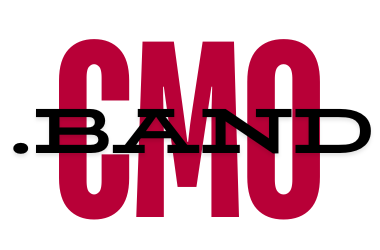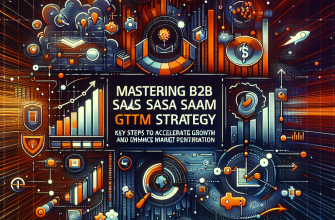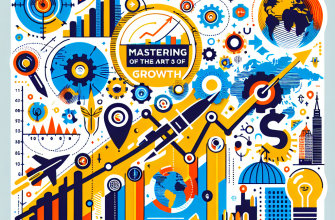Mastering B2B GTM Strategy: Essential Steps for Market Domination
In the dynamic world of B2B marketing, having a robust go-to-market (GTM) strategy isn’t just an advantage; it’s a necessity. As a digital marketing expert with years of experience in crafting effective B2B strategies, I’ve seen firsthand how a well-planned GTM strategy can transform potential into performance. Today, I’ll share some essential steps that can help your business not just enter the market, but dominate it.
Understanding Your Market
The first step in any successful GTM strategy is thorough market research. Understanding your market means more than just knowing who your potential customers are. It involves a deep dive into their behaviors, needs, and pain points, as well as a clear understanding of the competitive landscape. Use tools like SWOT analysis to identify strengths, weaknesses, opportunities, and threats. This foundational step helps in tailoring your offerings and messaging to meet the specific demands of your target audience.
Defining Your Value Proposition
What sets your product or service apart from the competition? Your value proposition is the core of your GTM strategy. It should succinctly describe why a customer would choose your solution over others. This isn’t just about having a superior product; it’s about clearly articulating its relevance to your customer’s business challenges. Ensure that your value proposition resonates with all decision-makers in the buying process, which in B2B often includes multiple stakeholders.
Segmentation and Targeting
Not all customers are created equal. Effective segmentation involves categorizing your potential market into manageable groups based on similar needs, behaviors, or demographics. This allows for more targeted and personalized marketing efforts, which can lead to higher conversion rates. Tools like account-based marketing (ABM) are particularly effective in B2B scenarios, allowing you to tailor your strategies to the specific needs and characteristics of each account.
Choosing the Right Channels
Digital transformation has proliferated the number of channels you can use to reach your audience. However, more isn’t always better. Select channels that are most frequented by your target audience. For B2B, this might include LinkedIn for social media marketing, email campaigns for direct marketing, and perhaps webinars and virtual conferences for thought leadership and engagement. The key is to integrate across channels to create a seamless customer experience.
Content is King
In B2B marketing, content is not just king; it’s the currency of engagement. Your content should educate, inform, and persuade. Develop a content strategy that supports your GTM plan at every stage of the buyer’s journey. From awareness through consideration to decision, your content should address the specific needs and concerns of your audience. Utilize formats like whitepapers, case studies, blogs, and videos to demonstrate thought leadership and industry expertise.
Leveraging Technology
In today’s data-driven environment, leveraging technology is non-negotiable. Tools like CRM systems, analytics platforms, and automation software can provide insights into customer behaviors and campaign effectiveness, streamline operations, and personalize customer interactions. The right technology stack can give you a competitive edge by enabling more precise targeting and more efficient use of resources.
Testing and Optimization
A GTM strategy is not a set-it-and-forget-it plan. It requires continuous testing and optimization. Use A/B testing for your campaigns to understand what works best. Analyze KPIs regularly to gauge performance and adjust your strategies as needed. The market is always changing, and so should your approach.
Alignment Across the Organization
For a GTM strategy to be effective, it must have buy-in across the organization. Ensure that sales, marketing, product development, and customer service teams are aligned with the GTM objectives. Regular training and communication can help maintain this alignment. Remember, a cohesive team approach can amplify your market reach and impact.
Scalability and Flexibility
As your business grows, your GTM strategy should scale accordingly. Be prepared to adapt your strategy based on performance data and changing market conditions. Flexibility can be a significant competitive advantage in the fast-paced B2B market.
Customer Feedback Loop
Finally, incorporate a mechanism to gather and analyze customer feedback continuously. This feedback is invaluable for refining your GTM strategy and product offerings. It helps in understanding the evolving needs of your market and ensures that your business remains relevant and competitive.
Mastering your B2B GTM strategy requires a blend of strategic planning, tactical execution, and continuous improvement. By understanding your market, defining a clear value proposition, and effectively using digital tools and channels, you can not only enter the market but dominate it. Remember, the most successful strategies are customer-centric, data-driven, and agile. Ready to dominate your market? Let’s get strategic!
Feel free to reach out if you need further insights or assistance in developing a comprehensive GTM strategy tailored to your business needs. Let’s make your market entry not just successful but spectacular!

A seasoned digital marketing strategist with over 8 years of experience across various areas of digital marketing, including SEO, SMM, PPC, content marketing, and email marketing. Specializes in transforming B2B, B2C, e-commerce, and SaaS businesses by creating effective go-to-market strategies and building thriving digital ecosystems. Known for a data-driven approach to optimizing campaigns and maximizing results.
“If your business is looking to scale or in need of a fresh perspective, feel free to contact”.





